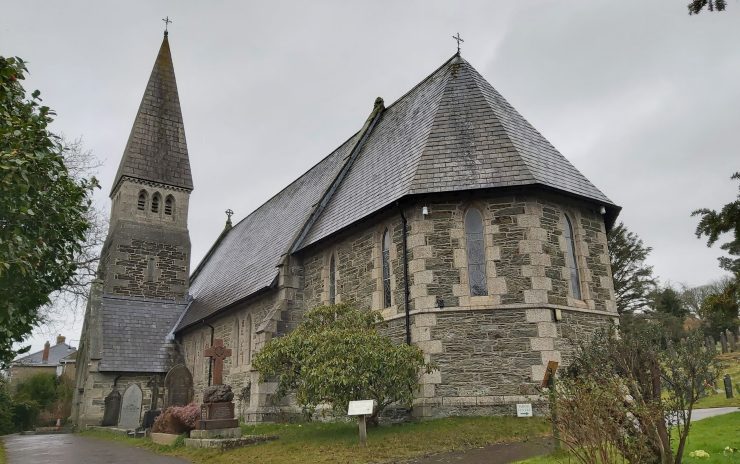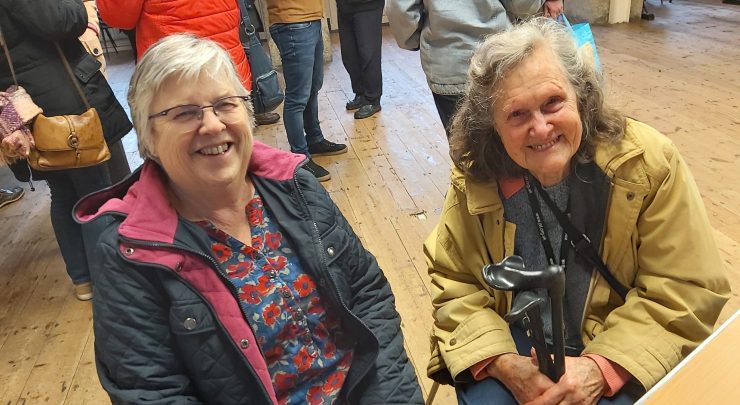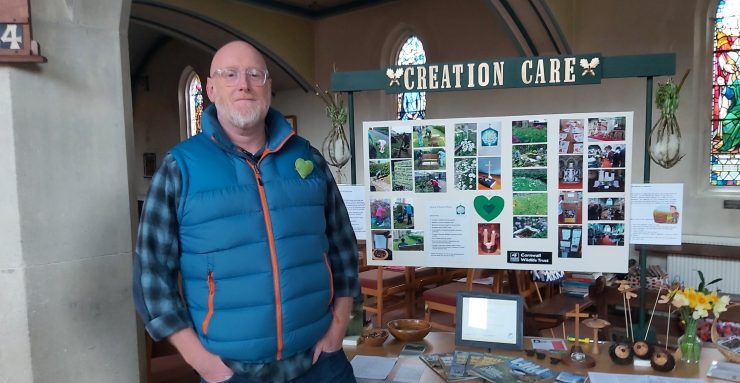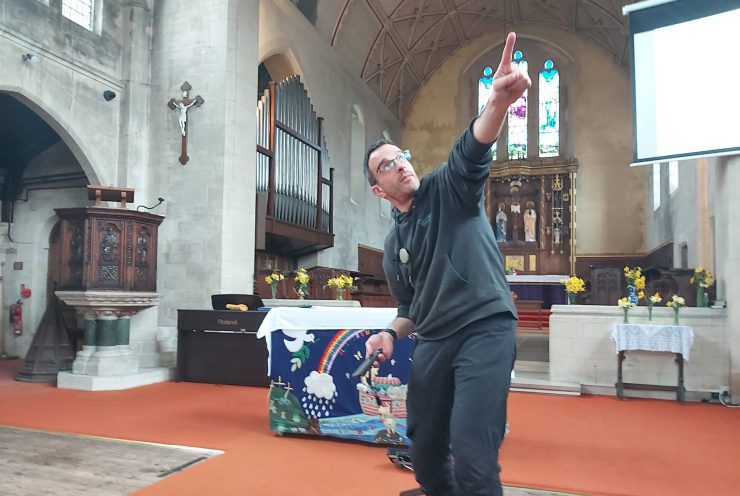Being green
We all have different ways of playing our parts in addressing the climate emergency.
Some of us car-share or use public transport. Some give up flying or choose not to eat meat. And others find ways to avoid heating the entirety of large, airy and poorly insulated medieval buildings. Because that can create a real CO2 drag.
The Church of England has explicitly recognised that in the face of the climate crisis the tasks of caring for creation and helping to create a viable future for the world have become particularly urgent aspects of its mission.
It has therefore developed an ambitious plan to reach net zero carbon emissions by 2030 – and to start to work on it now.
This plan includes the use of carbon-offsetting strategies, green energy sources, solar panels and new heating and lighting technologies, as well as encouraging changes in the behaviours of its members.
Perhaps its greatest challenge is, of course, how to enhance the energy efficiency of its older churches. One of the most innovative solutions has been to develop ways of keeping the people in the buildings warm, rather than trying to heat the vast spaces of these buildings as a whole.
This is an approach most recently adopted by the Church of St John and St Petroc in the idyllic rural parish of Devoran, just a few miles south of Truro.
“How do you insulate a whole church? There’s no real way you entirely can,” explains Dr Adrian Walker, lay chair of Devoran’s Parochial Church Council. More innovative methods have therefore proven necessary.
Following major work to restore the lime mortar holding the church building together – a project which had been urgently needed to address problems of pervasive damp – Devoran’s PCC turned its attention to another issue which had concerned them for quite a few years – the matter of heating the church.
They had depended for decades on an increasingly unreliable oil-fired boiler, which had tended to stop working at the most inopportune moments – often around Christmas time.
“But just replacing the boiler didn’t fit our requirements in terms of getting to net zero,” Adrian says.
The six-figure cost of the essential mortar work had been made possible by a generous legacy bequeathed to the church by a former priest of the parish, Canon Robert Catling. The PCC were now looking for a rather more affordable solution to their heating problem – one which was at the same time consistent with the Church of England’s environmental strategy and the Diocesan commitment to social action and its outreach mission.
“We’ve been trying to do all the right things to engage the community,” Adrian says. “And we’ve got a Creation Care champion in the congregation who keeps us very much on our toes!”
Adrian explains that they wanted to make the church building more family-friendly and more oriented towards younger parishioners, to improve its disabled access, and to enhance its capacity to host public events such as choir concerts.
This would involve removing a number of pews from the front of the aisle in order to make space for an area suitable for wheelchair access, movable seating and children’s play. It would also require that they found a new way of keeping everyone warm.
It was then that they heard that a church in the nearby parish of Ladock had been working with a Slovakian company based in London to introduce a clever new solution to this perennial problem.
In the hot seat
The idea is simple. You can reduce the need for ambient heating to the minimum required for the basic functioning of the building, if you focus on keeping the people themselves warm. You don’t need to have the rafters anywhere near as toasty.
“It’s a system used widely on the continent in much colder climes than Cornwall,” Adrian explains. “It’s basically the same as heated car seats – heated pews.”
So they went along to try it out and found they were remarkably impressed.
“One of its advantages is that it’s incredibly cheap, as it runs on a very low wattage,” Adrian adds. “These heated seats work exceedingly well. They’ve been very well received – there are lots of smiles all round!”
The Secretary of the Diocesan Advisory Committee for the Care of Churches, Sue Thorold stresses that strategies like those adopted in Devoran are key to helping parishes succeed in their ambitions for mission and worship. It can even also enhance the aesthetics of a building’s interior architecture.
“This scheme hasn’t only reduced their carbon footprint but has also achieved a conservation gain by removing unsightly pipework and radiators,” Sue says.
And, while it undoubtedly looks better than the old plumbing, the heating of the congregation via their seats certainly works. You can feel the benefit within a few seconds of sitting down. Indeed, following feedback from parishioners, they’ve actually started turning the temperature levels down.
In addition, they’ve installed heated mats beneath the carpeted space at the front of the aisle, which has now become a children’s play area, and which comes into its own during the monthly worship-for-all services at the church.
Churchwarden Anne Ramsden leads the worship at these intergenerational services. She has seen immediate benefits from this initiative.
“It’s already showing some impact,” she says. “Parents come and sit at the front with their children. The parents with younger children feel more comfortable with it. They can feel more part of the congregation.”
“A mum with a child in a buggy can go up there,” adds Clare Chipman, secretary to Devoran’s Parochial Church Council. “The children sitting in that front area are all very happy. It’s just such a happy feeling.”
They can now get as many as a dozen young people joining the congregation for their worship-for-all services. They also run ‘messy church’ gatherings in the local village hall once a month for families who, they say, might be initially wary of coming into the church building itself. They’re also in the process of launching a youth church and ‘tots and toys’ sessions.
Along with their green initiatives, these efforts are aimed at making their church community sustainable far into the future.
“The whole thing is a package that holds together,” says Clare.
In this way, the church at Devoran has managed to open itself up to new people, new events and new forms of worship. It has also significantly reduced its carbon footprint, and, thanks to a decision to invest in its future, has found a way to reduce its energy bills, both now and for the long term. This one smart move has thereby embraced sustainability in so many ways.
And, having found a way to save on their fuel costs at the same time as they do their bit to save the planet, what might come next for the Church of St John and St Petroc?
“We’d love to be able to find the funds to fit solar panels,” Adrian says. “One side of the church faces south – so we could manage to generate our own power quite well!”
Devoran’s work is enthusiastically welcomed by Ben Lillie, Environment Officer at the Diocese of Truro.
“It’s great that we have churches pioneering the way towards net zero,” Ben says. “As with all things related to addressing the climate crisis, there’s a cost involved, but we believe that this is a vital investment in the future of the church and of our world, so that we can flourish and be fruitful for decades and centuries to come.
“It’s so encouraging that our churches can offer a genuinely sustainable warm welcome. Here are churches demonstrating what it means to cherish creation, to cut carbon and to speak up.”
Matt Fulford, who advises the Church of England on reaching its net zero carbon target, agrees. On a recent visit to Cornwall, he noted that seven per cent of Church of England churches have already hit that target, and that, with just seven years to go till 2030, the process of change has been speeding up.
He also commended seat heating units as one valuable way forward.
“They’re directly heating the person rather than the entire volume of the church, which can be quite massive. So that’s very efficient. Because they provide heat directly to the person, they give a really high level of thermal comfort.
“They represent one of a number of solutions which have a very important part to play in getting to net zero. It’s not necessarily about having just a single solution for a church, but about developing a combination of solutions.”
Matt is passionate in his belief in the value of such efforts and in his hopes for their long-term impacts.
“The Church of England has done quite huge amount in a very short space of time,” he says. “Don’t think it’s impossible. This can be done. It’s not difficult to do. It can be done with today’s technologies. It is being done.”
Our next Net Zero 2030 workshop will take place in Wadebridge on Tuesday 9th May.





